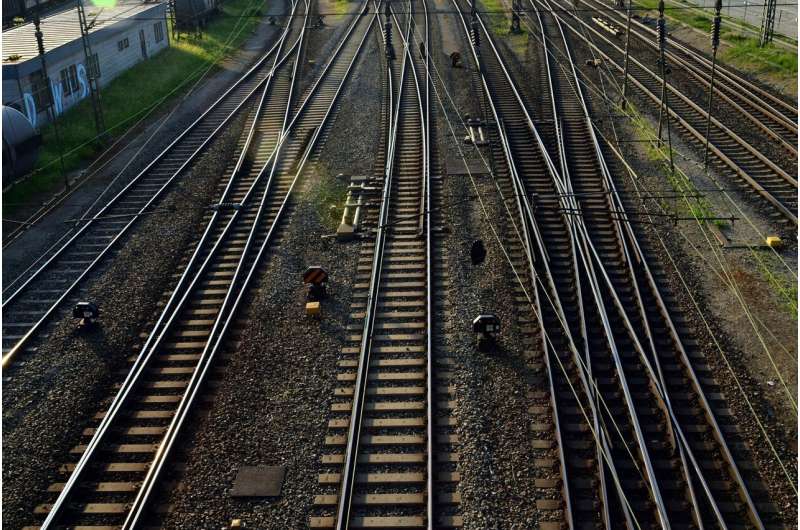
Most urban transit systems have a brief window of time in the wee hours of the morning to perform maintenance work without disrupting passenger service.
Researchers from Northeastern University have developed multiple models to optimize this window, one of which shaves travel times for maintenance vehicles by an average of 23 minutes.
"Every minute counts," says Northeastern Ph.D. candidate John Moody.
His adviser, Haris Koutsopoulos, agrees.
"Twenty-three minutes may not sound like a huge amount of time, but it's important to look at it as a percentage of the average time they have every night, which at the time was around 90 95 to 100 minutes to do the job," says Koutsopoulos, a professor of civil and environmental engineering and director of the Transit Mobility Lab at Northeastern.
The Transit Mobility Lab partners with the MIT Transit Lab and transit agencies across the country on research projects, including the Washington Metropolitan Area Transit Authority in Washington, D.C., the Chicago Transit Authority.
In the lab's latest research, published in the journal Transportation Research Record, researchers partnered with the Washington Metropolitan Area Transit Authority to address how to optimize the maintenance time available for a system that provides passenger service 19 hours per weekday.
"It's a good example of what Northeastern preaches in experiential learning," Moody says. "We seek to understand the practical issues to be addressed, and we apply them to real world scenarios—it's not just theory."
Most often that maintenance time occurs early in the morning when passenger service is suspended.
But Moody and Koutsopoulos say it's rarely as simple as driving to a worksite with your tools at hand, ready to go.
"It's not an easy environment to work in at night," Koutsopoulos says.
For instance, job sites are often underground and accessible only by rail—and some parts of the labyrinthine rail network are easier to get to than others. Maintenance machines (work trains) also need to get to the worksite.
Then there are the many safety protocols that have to be followed on a worksite powered by electricity, with an electrified third rail, and that is home to traveling railcars that must follow spacing, speed and other regulations.
"A lot of planning goes into it," Moody says of maintenance work. "Simply deploying crews and maintenance vehicles to places they need to be we found took a lot of time."
So the researchers took a "deep dive" into work train deployment strategies, trying to answer such questions as where is it optimal to store work trains throughout the Washington rail network? How do work trains get assigned to projects? How do you schedule and route work trains to get to the worksite as soon as possible and to avoid other trains also using the network?
By analyzing Washington rail data—for example, data that records train movements during past work projects, what trains were being used for work projects and where they were stored, departure, routes and arrival times of trains along the rail network—the researchers were able to develop strategies that they could then test against past events.
The researchers tested four strategies: optimizing the long-term yard storage locations of work trains; optimizing the assignment of work trains to work zones; pre-positioning work trains closer to their work zones on track not used for revenue service; and optimizing the routing and scheduling of work trains through the network to reach the work zones.
While the strategies are not exclusive—for instance, one scenario tested might involve pre-positioning work trains and optimized routing and scheduling of work trains—researchers found "pre-positioning" work trains resulted in those trains getting to the work site an average of 23 minutes earlier than by scheduling and routing alone.
In fact, the Washington Metropolitan Area Transit Authority will be testing a version of the pre-positioning strategy in the coming months, Moody says.
Moody says other transit systems have also expressed interest in the research.
More information: John Takuma Moody et al, Strategies to Optimize the Deployment of Roadway Maintenance Machines for Overnight Maintenance in Urban Rail Systems, Transportation Research Record: Journal of the Transportation Research Board (2024). DOI: 10.1177/03611981241254388
This story is republished courtesy of Northeastern Global News news.northeastern.edu.
Citation: Research recommends strategies to optimize overnight maintenance in urban rail systems (2024, August 28) retrieved 28 August 2024 from https://techxplore.com/news/2024-08-strategies-optimize-overnight-maintenance-urban.html
This document is subject to copyright. Apart from any fair dealing for the purpose of private study or research, no part may be reproduced without the written permission. The content is provided for information purposes only.
